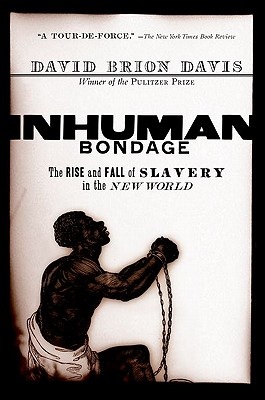How Indian IT is Bringing Bonded Labor to the US
Executive Summary
- Bonded labor is illegal in the US. However, Indian companies are engaging in bonded practices.
- What this means for labor practices in IT in the primary IT markets.

Introduction
There have been shocking things happening in the area of human bondage, which is entirely due to Indian labor practices being exported to the US by Indian companies. We will begin this article discussing IT recruiters, move on to H1-B Visas, and then discuss labor bondage.
Indian Conformity the US Law and the Laws of the Countries of the Primary IT Markets
We began to notice unconscionable contracts from Indian IT recruiters several years ago. These contracts were like nothing we had ever seen, and when they questioned these contracts, we were told by the recruiters that they had many subcontractors working underneath them.
These contracts were so horrid we wrote up one experience in the article Contract Clauses to Watch Out for In Professional Service Agreements and Recruiter Lies Explaining Clauses on Subcontractor Agreements. The IT recruiting area overall has become a hotbed of practices that are either illegal or highly inconsistent with US standards. What appears to be happening is that Indian recruiters are bringing Indian culture and labor standards from India to the US and other primary IT markets rather than adopting the legal and ethical standards of the countries they are migrating to.
This is explained by The Guardian as follows:
“Softech is a case in point. Owned by Krishnan Kumar, Softech has filed 32 lawsuits against employees in Gwinnett County, Georgia. Many of those lawsuits name workers who complain that they quit because they weren’t being paid. Yet most of the workers ended up on the losing end, through settlements or mediations or in court.
Kumar declined to be interviewed. But in court testimony and legal filings, he says he sues former workers to recoup the financial damage their departures cause his company – damage he routinely values at $20,000.
Virginia attorney Rajiv Khanna, who represents employers and employees in immigration matters, considers the financial shackles “an immoral, unethical and very probably illegal control of the workforce.””
And in this quotation.
“Of nearly 200 H-1B labor violation investigations completed by the Labor Department in the 2013 fiscal year, seven companies were cited for imposing – or attempting to impose – illegal penalties on workers who quit
In at least three of these cases, CompSys made workers headed to the US sign bonding agreements requiring them to pay hefty fees if they quit. They had to sign another document once they arrived, agreeing to pay $15,000 more if they quit before the end of their contracts.
“It is an artificial handcuff on workers,” said Paul Weiss, a labor attorney in New York who represented workers in some of the CompSys cases. “To impose such a draconian requirement is unconscionable.””
We found very similar types of, if not illegal, completely inappropriate clauses in the contracts of Indian recruiters when I explained the deep problems with the contract, the Indian recruiting firm attempted to get us to speak on the phone (we think to remove the paper trail) and then proceeded to lie to us about the contract.
And the largest firms are also implicated, like TATA consulting, as the following quotation attests.
“Binding workers to their jobs in various financial ways is not limited to small-time labor brokers such as Softech, which had 81 petitions for H-1B workers approved between the 2011 and 2013 fiscal years.
Global giants such as Tata Consultancy Services Ltd, part of India’s Tata group, also have made workers sign restrictive employment agreements before they leave India for the US, according to interviews with several workers and company documents submitted in court.
With more than 16,000 H-1B petitions approved between the 2011 and 2013 fiscal years, Tata has been one of the top users of the temporary visas, according to US Citizenship and Immigration Services records. Tata clients have ranged from tech giants such as Cisco Systems to retail firms such as Walmart.
In interviews, workers said Tata demanded that they pay penalties if they quit before their contracts ended.
A native of Haryana, a northern state outside New Delhi, Kaushik started working for Tata at age 24 in India. Five years later, in 2012, the company transferred him to South Florida. Just before his departure, Kaushik said Tata required him to sign a contract promising not to quit his US job.
Over the next two years, Kaushik says Tata contracted him out to work 14-hour days without overtime pay as a computer programmer for Carnival Cruise Lines in South Florida. He was paid $60,000 a year, even though programmers in the Miami area then earned a median annual salary of $98,000, according to the Bureau of Labor Statistics.
“I worked from 9am to 11pm almost every night and never got paid overtime,” Kaushik said. “I thought, ‘Why am I working with this company?’
After Kaushik gave the company a week’s notice in early January, a Tata human resources representative declined to provide him with proof he had worked for the company – essential for maintaining his visa status in the United States – according to Tata emails Kaushik shared with CIR. The company also stonewalled him when he asked for the $7,000 he and the company had contributed to his retirement fund, Kaushik said.”” – The Guardian
TATA’s Defense: Contracts That are Originally Signed in India but for the US Market are not Subject to US Law
And TATA is using the defense that since the contracts are signed in India (where pretty much anything goes), the US courts do not have jurisdiction, even though most of the life of the contract is carried out in the US!
“Yet in 1997, a state appeals court panel in San Jose sided with Tata’s lawyers, who had argued that the contracts were beyond the court’s jurisdiction because they were signed in India.”
Understanding the History of Bonded Labor
Apple publishes the following rules for suppliers.
“For example, Apple’s supplier code of conduct says companies that provide services to Apple “shall not traffic persons or use any form of slave, forced, bonded, indentured or prison labor”. The company reports that last year, it conducted 27 audits into allegations of bonded labor at its suppliers, most of them offshore.” – The Guardian
Notice the terms “bonded” and “indentured” in the description.
It is essential to understand that those who bond labor have historically attempted to keep the bonded laborer from paying off the bond. This is explained in the following quotation.
“For instance, a laborer may begin with an initial debt of $200. While working and unable to leave, this worker needs a shelter, food and water. The employer tacks on $25 per day to the debt to cover those expenses. Consequently, the employee only grows his debt while continuing to labor for his debtor, and repayment is impossible.
Oftentimes this debt is passed down from generation to generation, making it eerily similar to chattel slavery in the 18th and 19th centuries. Migrant laborers are particularly vulnerable to this form of enslavement. In their home countries, migrant laborers contract with labor agencies and employers for a destination country, looking for an economic opportunity. These situations are ripe for exploitation because agencies and employers hold a debt or a bond over these employees.
Still, this particular system of slavery is deeply entrenched around the world. It’s most common in India, Pakistan, Bangladesh and Nepal. In fact, the majority of the world’s slaves live and work in India in a form of bonded labor.” – End Slavery Now
Bonded labor was engaged in the post-Civil War period in the US when African Americans supposedly received their “freedom” after the Emancipation Proclamation. This tends not to be taught in high school or college courses on history in the US, and the teaching of this history can sometimes get the presenter of the information classified as “anti-American.”
“Following the Civil War, former slaveholders and white Americans needed labor for their workforce, so they found new ways to force African Americans to work. Whites arrested and charged African Americans and then fined them for their various crimes. Former slaves had little money to afford such fines, so white businessmen forced the emancipated slaves to take on debts in exchange for paying them. These former slaves then had a bond over them, and employers exploited the situation so that the debt could never be repaid.” – End Slavery Now
After the Northern influence left the US South, what is referred to as “slavery by another name” increased. And the system converted to bonded labor rather than slavery. Bonded labor sounds much cleaner than slavery.
This is a powerful animation. It describes a world in which bonded laborers live currently globally. This a very difficult video to watch.
Apple’s Constant Opportunities for Coerced Labor
The term bondage or human bondage is the same as debt peonage and is often used in conjunction with the term slavery. Interestingly, Apple has this comment in its contracts because it is well known to profit from what amounts to sweatshop conditions in its contract manufacturers. Apple does not need to exploit any worker personally.
- In China, there are contract manufacturers lined up to offer Apple coerced labor.
- In India (and in Indian companies in the US), firms are lined up to offer Apple bonded labor.
- In the US, there are a large number of US workers in PR willing to tell any lie to defend anything Apple does.
International Trade: Good for Increasing the Diffusion of Coerced Labor?
Previously, it was highly uncommon to hear about coerced labor in the modern era in the developed world. However, international interactions have changed all of that. All those practices that the developed world congratulated themselves for moving past are now creeping back in.

The dirty little secret is that not everyone opposes labor coercion. It might not be something that one advertises on their dating profile. Still, it is irrefutable that many people in many countries are pretty amenable to slavery and coercion as long as either they or their family members are not coerced individuals.

Some say that exploiting labor is always a negative. But that can be a shortsighted view. One must consider how that money from exploiting labor is spent, and much is spent in boutiques of great status that allow one to demonstrate one’s class and style. Therefore, perhaps one should be careful not to judge labor exploitation too harshly.
International interactions were supposed to lead to more flexible and open capitalism. Still, the interactions with the less developed world constantly bring coerced labor and bonded labor into the companies operating in the developed world.

Apple has hundreds of billions of dollars in offshore accounts untaxed, and it can take its choice of entities, primarily from the undeveloped world, offering them bonded labor, allowing Apple to squirrel away even more money. What a fantastic system! Apple can succeed in barely paying taxes and having an army of coerced laborers working for it.

This is one of the best books written on the history of slavery, and notice the title Inhuman Bondage.
It means a person works under a bond and is inaccessible until they have paid it. Human bondage is strongly related to human trafficking. Often, people are moved to locations where they are unfamiliar and made to work off the bond.
Time to Reduce Onerous Regulations on Bonded Labor to Accommodate Indian Companies?
This is “bonded” labor, and while bonded labor was made illegal in the primary IT markets, it is still very common in India today. The Indian influence in the IT labor markets has brought the practice back to shores where it had been eradicated. This goes back to the repeating pattern we have observed of Indians bringing labor practices from India to their new countries. And the people they are putting into bondage are not the domestic population but other Indians. The fact is that bondage labor is accepted as a practice in India. Therefore, extending the practice to the primary IT markets seems perfectly natural, even if it is illegal in those countries.
Entities Trying to Stop International Bonded Labor (i.e..Not Apple, WiPro, or Infosys)
The website Anti-Slavery.com covers this topic of human bondage in great detail.
“Debt bondage occurs when a person is forced to work to pay off a debt. They are tricked into working for little or no pay, with no control over their debt.
Most or all of the money they earn goes to pay off their loan. The value of their work invariably becomes greater than the original sum of money borrowed.
Puspal managed to leave thanks to the great support her family received from our project partners, but usually that it is extremely difficult. People bonded by debt face coercion, violence and intimidation if they try to leave.
Bonded labour has existed for hundreds of years. Debt bondage was used to trap indentured labourers into working on plantations in Africa, the Caribbean and South-East Asia, following the abolition of the Transatlantic Slave Trade.
Bonded labour is most widespread in South Asian countries such as India and Pakistan. Often entire families have to work to pay off the debt taken by one of its members. Sometimes, the debt can be passed down the generations and children can be held in debt bondage because of a loan their parents had taken decades ago.
Bonded labour flourishes because of poverty and widespread caste-based discrimination. Limited access to justice, education and jobs for discriminated groups makes it difficult to get out of poverty.”
The Importance of Silence on the Topic of Indian Bonded Labor
India is the 12th most income-unequal country in the world, and bonded labor has been highly influential in keeping India at that level of inequality. Many in India usually feel that it is better not to discuss bonded labor as keeping it quiet is better for national pride and can help motivate no change in this area.
Indian Respect for Freedom of Speech and of the Press
India has historically never had any freedom of speech or the press. This is how India has remained the twelfth most income-unequal country in the world. This inequality is why India is such a hotbed for bonded labor. To maintain this level of income inequality, suppression of freedom of speech is necessary. And most Indians will oppose this article. It is opposing even the right for it to be written. Again, freedom of speech is part of US law, not Indian law, and the established preference is for Indian law, but not in India or in the US. India cannot change internally because India has very low freedom of the press. According to Reporters without Borders, India ranks 138 out of 180 countries in press freedom. Articles written in the Indian press have a distinct stamp of being censored or self-censored, and no India media outlet is prominent or read outside of Indian readers.
Conclusion
Indian IT companies are not only engaging in H1-B Visa fraud, but they are also bringing Indian nationals into the US under conditions of human bondage. US companies know this and seem to continue hiring IT resources through Indian companies. But companies like Apple are nice enough to declare to IT suppliers that they don’t want bonded or coerced labor (in the US). This is odd because Apple is fine with coerced labor if it is in China. The primary issue is that Apple is fine with coerced labor (that is why they went to China first), but Apple prefers that the word coerced not be used. Coercion and bonded labor….and perhaps full-on slavery, are perfectly fine, but it is the usage of these terms that is offensive.
If the US does not enforce its labor laws, they do not exist. Indian firms have demonstrated such a pattern of violating US labor laws that there should be many investigations opened against Indian firms. The reason? The evidence is clear that Indian firms, in a very unique way, are engaging in bonded labor. That bonded labor is through a contract in India, carried out in the US.
Part of the idea of IT workers from India being allowed to work in the primary IT markets was that these companies would obtain the needed skills. However, much evidence is now that many of these skills are falsified. Furthermore, because of the influence of Indian IT companies, US labor laws are being degraded, and the impact is that not only are Indian workers being subject to highly inappropriate contracts, but Indian companies seek to place domestic workers under these same contracts, contracts that are set up under Indian labor standards and practices rather than US labor standards and practices.
References
This is an excellent video that shows the estimates of slavery that currently exists in the world. The topic becomes more complex when one includes bonded labor. Bonded labor can be a difficult distinction from slavery. Indian immigrants are paid well compared to people with the same skills who work in India, but they are, in many cases, still controlled by a bond or by the H1-B process, which makes them subordinate to their employers. Employers are constantly looking for labor that can be bonded or enslaved.
https://www.reuters.com/article/us-infosys-settlement-idUSBRE9A70IC20131108
http://www.endslaverynow.org/learn/slavery-today/bonded-labor
Slavery Is Alive And Well In America, Fueled By The Need For Cheap Labor
https://www.thedailybeast.com/how-slavery-gave-capitalism-its-start
https://www.antislavery.org/slavery-today/bonded-labour/